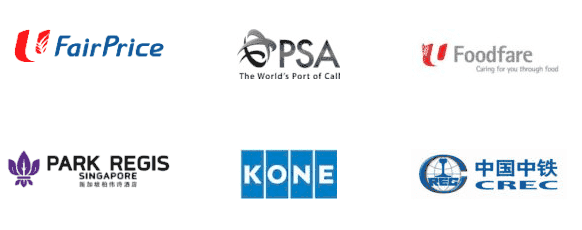9 Essential Steps To Setting up a F&B Business In Singapore
Setting up an F&B business in Singapore is definitely not easy. Unlike most businesses overseas, where most start off with conversations like this: “Your fried chicken is pretty good! You should get a food license and open a restaurant!”, F&B business owners in Singapore have to adhere to many stringent control and regulations created by the government. This is due to Singapore’s past history of unhygienic F&B practices as well as food scares.
In addition to the regulations in place, F&B business owners must also operate in venues that have been approved by the Urban Redevelopment Authority (URA). All F&B businesses are governed by the National Environmental Agency (NEA). NEA oversees the management, regulation, as well as licensing of F&B businesses. Whether you are a foreigner or a local entrepreneur, you need to have adequate knowledge of the F&B industry. To help you on your journey, we have compiled 9 essential steps that will be essential for your success.
1. Set aside sufficient capital for setting up a F&B business
Never underestimate the cost of starting an F&B business in Singapore. Depending on the size and location of your business, the average cost to start an F&B business ranges from approximately $50,000 to $500,000. The cost includes rental, staff salary, renovation, and the general standard of living. The recommended capital you should set aside before starting the business is at least six months’ worth.
Do not take any shortcuts when starting an F&B business. If you struggle to set aside such a huge sum, you may want to consider putting renovations on hold, finding a less expensive location, or looking for a business partner. We do not recommend or advise taking up business loans due to the high risks that come with them.
2. Plan your budget for the F&B business
To build a strong business foundation is to ensure a well-planned budget. However, if finance is not a concern, you may want to skip to the third step.
Based on the capital you have set aside, you need to identify the cost used for:
- Renovations (Bare vs Takeover): Bare units mean having to purchase and install more equipment, which increases your overall renovation costs. Takeover units might come with the basic necessities, such as flooring, exhaust, piping, and electrical. Unless you decide to do a total revamp, you may consider keeping them, which saves cost.
- Equipment: The total cost of your kitchen equipment
- Rental: You should ensure that at any moment, you have at least 25 per cent of the least cost set aside as a contingency plan. That means if your lease is for 24 months, you should set aside 6 months’ worth of contingency funds.
- Wages: You should ensure you have enough to pay six months’ worth of employees’ wages.

3. Incorporate your business
The first step is to register your business with ACRA. Singaporeans can easily do so with their SingPass. Foreigners, on the other hand, have to first apply with MOM for an Entrepass, then apply for SingPass before incorporation. The F&B industry in Singapore is highly competitive. Hence, including food catering as a secondary business activity is highly recommended. You will also need to indicate your business structure: Private limited vs Sole proprietorship. We highly recommend selecting the Private Limited structure. You can also appoint local accounting firm in Singapore like AG Singapore to help with the incorporation.
The total cost to incorporate your business is $15 for registering with ACRA and up to $600 for incorporating of business.
4. Select your business location
Location is key to the success of the business. There are many F&B locations in Singapore, from heartland districts to the CBD. One key suggestion to take note of is to choose a location that is in close proximity to lunch and dinner crowds. Another key suggestion is to know the area dynamics. You would not want to open a Chinese restaurant in a predominantly Muslim community, such as Kampong Glam.
5. Supply & Demand
Besides choosing a location that will serve well for your business, it is also vital to check and see the surrounding competition in the immediate area. If the location you are interested in has several competitors serving similar menus, this means that there is less supply and demand for your food. Opening a restaurant in that location might mean that you would have to lower costs just to stay ahead of the competition, which also lowers your overall profit. However, this does not affect you if you are offering a unique menu to the existing crowd.
6. F&B licenses are required to operate your business
There are mandatory F&B licenses you need to apply for before running your business. Some general licenses necessary to apply for are:
- Food shop license
- WSQ food hygiene course
- Alcohol license should you intend to sell alcohol
- Halal license if your menu serves Muslims
Registering for CPF is also mandatory for all employers too. It is a social security saving plan which includes employers’ contribution of 7.5 per cent for employees over 65 years old and 17 per cent for employees 55 and below.

7. Space planning and kitchen equipment
Depending on the extent of your business needs, some companies offer a one-stop solution, from highly customisable equipment to space planning and specifications. It is crucial to discuss with your chefs the exact requirement for your F&B business, keeping in mind the budget you have set aside as well. Instead of purchasing all new equipment, you might also want to consider renting or leasing certain equipment. Alternatively, you can also purchase second-hand equipment from established businesses that are upgrading theirs.
8. Manpower and staffing
Although Singapore is one of the most densely populated countries in the world, hiring can be a tough event due to low local demands and tight foreign labour quotas. While there are traditional avenues, such as job advertisements and recruiting from competitors, there are alternatives you might want to consider, such as collaborating with companies that train hospitality trainees and chefs.
9. Marketing
Every new business will need marketing in order to secure the success of its opening. Whether it is offline, online, or traditional media marketing, successful marketing requires good content that will entice potential customers to visit your newly opened F&B business.
Conclusion
Starting an F&B business in Singapore might not be a walk in the park, but with adequate knowledge about the industry and knowing what to do, you can have an easier time. Nevertheless, should you require corporate advice and solution on operating your business, do seek Ackenting Group for help. We offer affordable accounting services, audit services, branding services, company incorporation services, GST services, as well as digital marketing services, among other range of essential services you will need as you run your business. In other words, we are the ideal one-stop solution to help you run the finance side of your business, so you can allocate more resources to grow your business.
For more information on us, do contact us at +65 9383 2464 or visit us at https://ag-singapore.com/.














